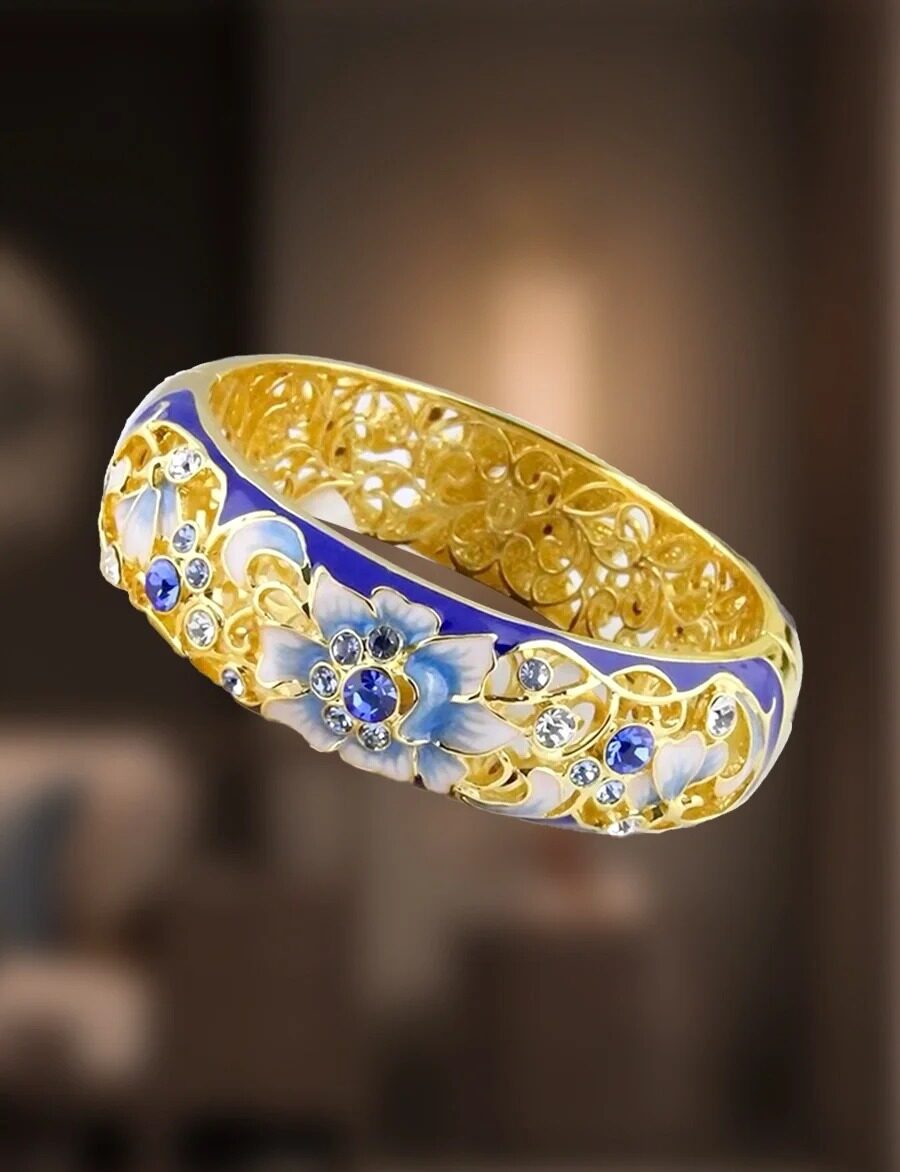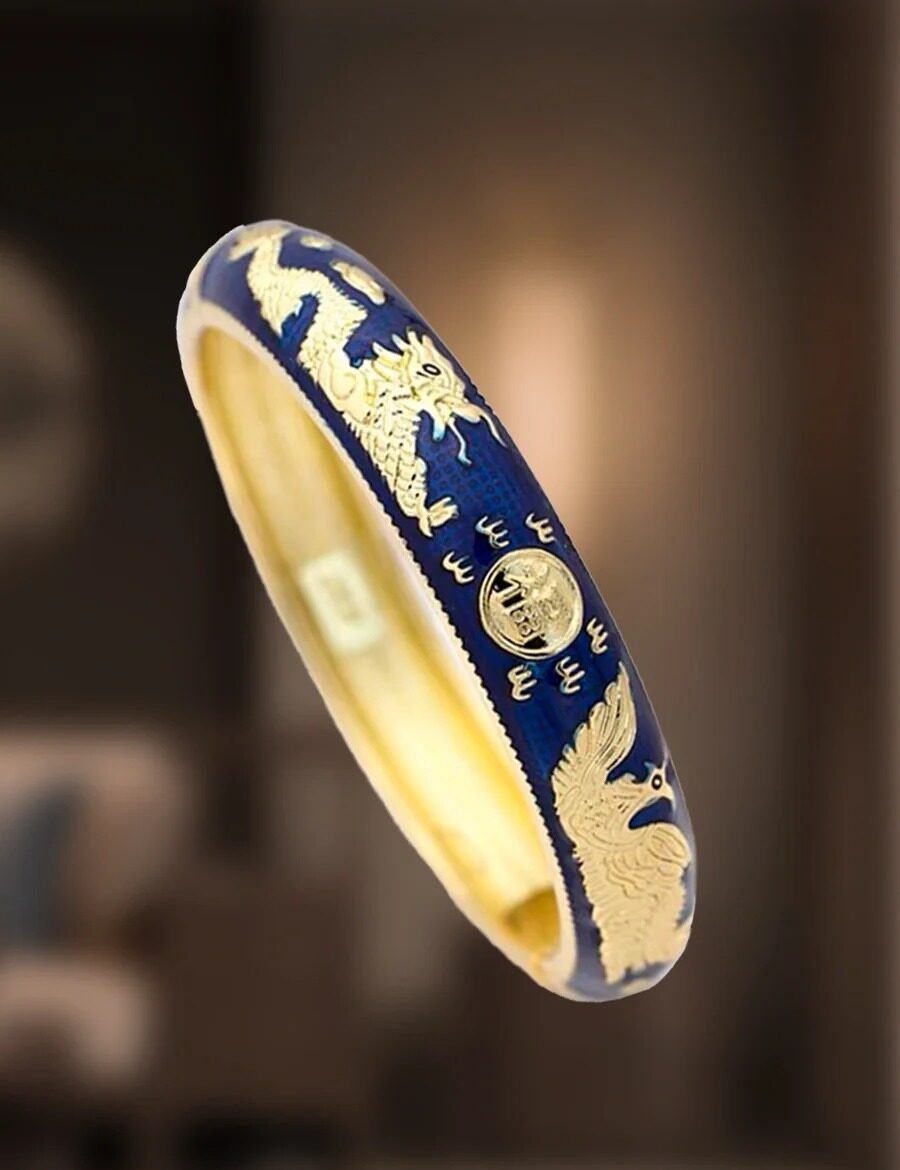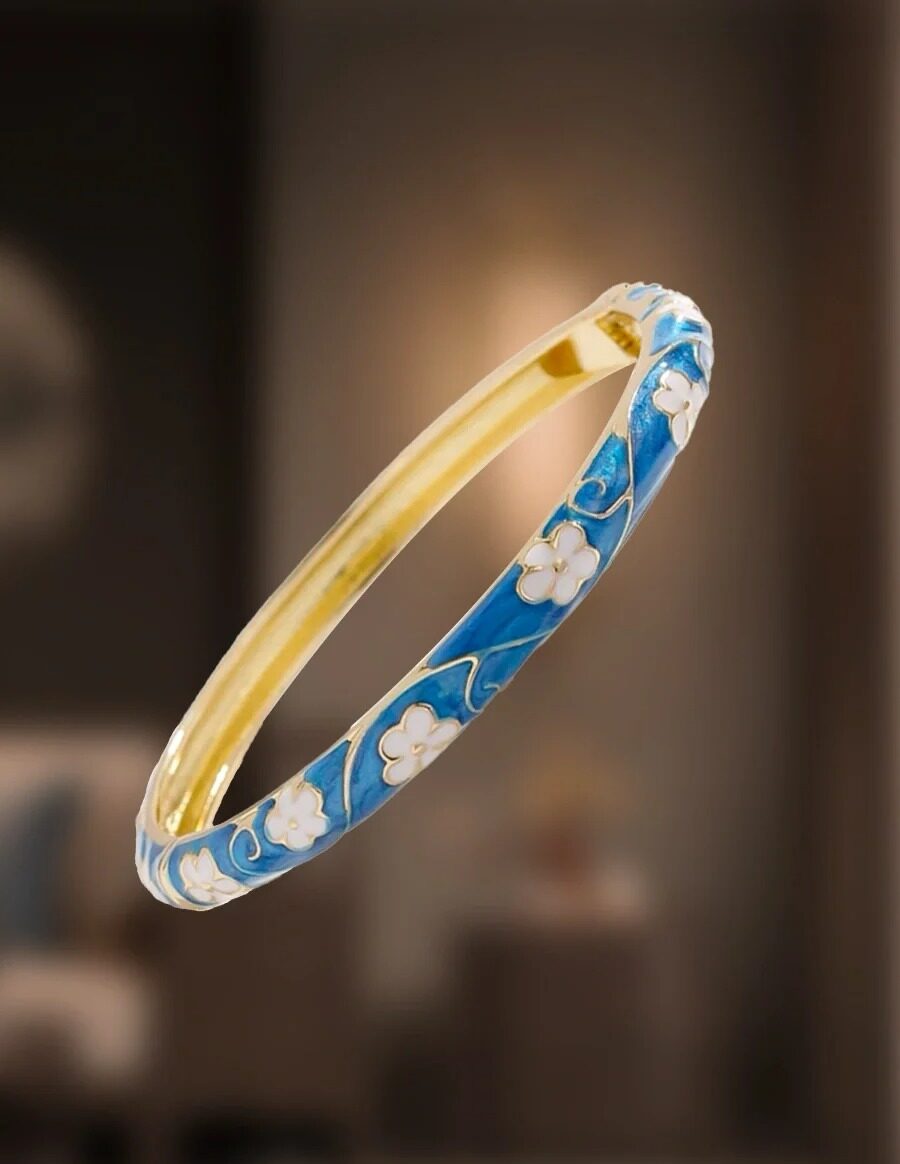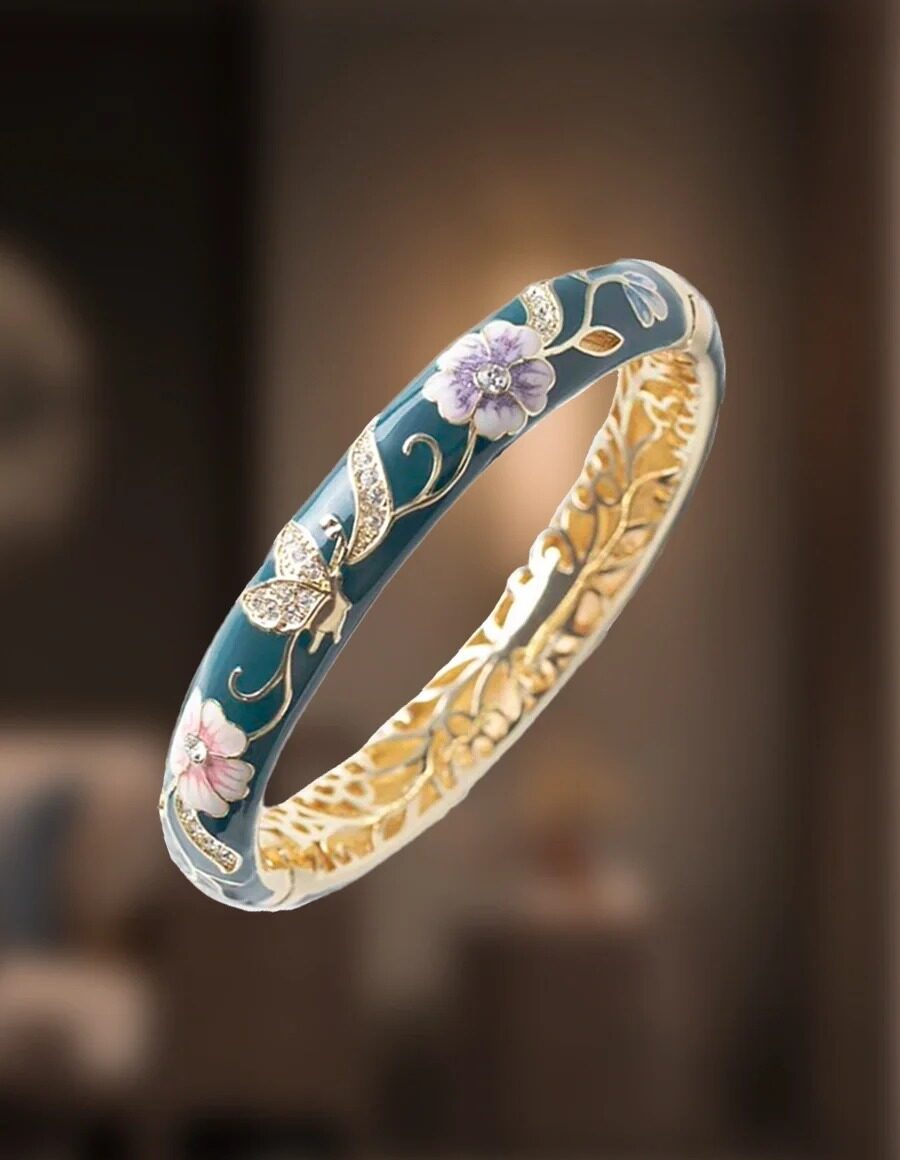Introduction to Cloisonné Jewelry
Cloisonné jewelry is a dazzling fusion of metalwork and enameling, creating wearable art that has captivated cultures worldwide. This intricate technique, originating in the ancient Near East, involves creating compartments (cloisons) on a metal surface and filling them with colorful enamel.
In China, cloisonné jewelry gained popularity during the Ming Dynasty (1368-1644), becoming a symbol of status and artistic refinement. Its allure spread across continents, finding admirers in Byzantine, Russian, and even Art Nouveau European circles.

The Art of Making Cloisonné Jewelry
Creating cloisonné jewelry is a meticulous process that requires skill, patience, and artistic vision:
- Base Preparation: A metal base (often copper or silver) is shaped.
- Wire Application: Thin metal wires are bent and soldered to form designs.
- Enamel Filling: Powdered glass enamel is carefully placed within the wire compartments.
- Firing: The piece is fired in a kiln, melting the enamel.
- Polishing: After cooling, the surface is polished to a smooth finish.
This process may be repeated several times to achieve depth and brilliance.

Types of Cloisonné Jewelry
Cloisonné techniques can be applied to various jewelry types:
| Jewelry Type | Description |
|---|---|
| Earrings & Pendants | Often feature intricate, symmetrical designs |
| Bracelets & Bangles | Allow for larger, continuous patterns |
| Rings & Brooches | Showcase miniature artworks |
| Necklaces & Beads | Combine multiple cloisonné elements |
Each piece is a unique work of art, blending form and function in wearable design.
Design Elements in Cloisonné Jewelry
Chinese cloisonné jewelry often incorporates:
- Motifs: Flowers, butterflies, dragons, and auspicious symbols
- Colors: Vibrant blues, reds, and greens, often with gold accents
- Patterns: Geometric designs, swirls, and nature-inspired elements
These elements are often combined with other techniques like filigree or gemstone setting, creating pieces of stunning complexity.

Cultural Significance of Cloisonné Jewelry
In Chinese culture, cloisonné jewelry isn’t just decorative; it’s imbued with meaning:
- Lotus flowers represent purity and enlightenment
- Dragons symbolize power and good fortune
- Phoenixes embody rebirth and feminine grace
Similar symbolic importance is found in other cultures, such as the religious iconography in Byzantine cloisonné or the nature motifs in Russian enamelwork.
Contemporary Cloisonné Jewelry
Modern artists are breathing new life into this ancient technique:
- Combining cloisonné with contemporary jewelry designs
- Experimenting with unconventional color palettes
- Incorporating non-traditional materials like titanium
Artists like Shirley Zhang and Wen-Ying Tsai are pushing boundaries, creating pieces that honor tradition while embracing innovation.

Traveler’s Guide to Cloisonné Jewelry
For those seeking to acquire cloisonné jewelry in China:
- Where to Buy:
- Beijing’s Panjiayuan Antique Market
- Shanghai’s Yuyuan Bazaar
- High-end jewelers in major cities
- Tips for Identifying Quality:
- Look for smooth enamel surfaces without bubbles
- Check for secure wire work with no gaps
- Authentic pieces should have some weight to them
- Care and Maintenance:
- Clean gently with a soft, dry cloth
- Avoid exposure to water and harsh chemicals
- Store in a soft pouch to prevent scratching
- Packing and Traveling:
- Wrap pieces individually in soft cloth
- Use a hard jewelry case for additional protection
- Keep valuable pieces in your carry-on luggage
As you explore the world of cloisonné jewelry, remember that each piece is not just an accessory, but a miniature masterpiece. Whether you’re admiring the imperial collections in Beijing’s museums or selecting your own piece from a local artisan, you’re connecting with a centuries-old tradition of craftsmanship and artistry.
For the discerning traveler, cloisonné jewelry offers a wearable memento of China’s rich cultural heritage. As you fasten a cloisonné pendant around your neck or slip on a vibrant enamel ring, you’re not just adorning yourself – you’re carrying a piece of history, a spark of artistic innovation, and a symbol of cultural exchange. Let the intricate patterns and brilliant colors of cloisonné jewelry serve as a lasting reminder of your journey through China’s artistic landscape.





